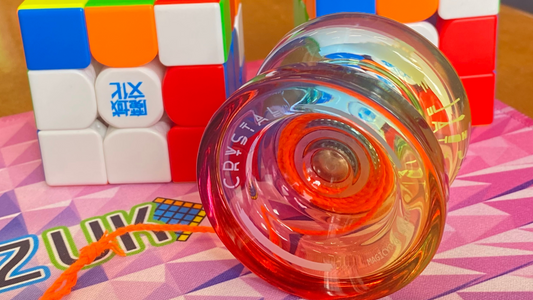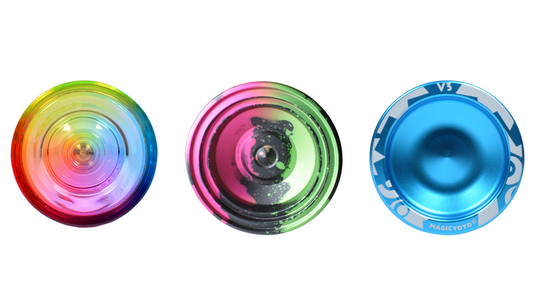
Yoyoing began over 2500 years ago and we often get asked where yoyoing originated from, so we thought we would share the answers here with a bit of background information.
Yoyoing, a timeless art form, has roots that extend deep into history, captivating the hearts and minds of people across cultures and generations. This simple yet mesmerising toy has a rich and diverse origin story that spans continents and centuries. Join us on a journey through time as we explore the fascinating history of the yoyo.
Ancient Beginnings
The origins of the yo-yo can be traced back over 2,500 years to ancient Greece. The earliest known depictions of yo-yo-like toys can be found on ancient Greek vases dating back to around 500 BCE. These terracotta representations depict children playing with toys that closely resemble the modern yoyo.
Chinese Connection
While the Greeks may have introduced the concept, it was the Chinese who took yo-yoing to new heights. In ancient China, yo-yos were crafted from a variety of materials, including wood, ivory, and bamboo. The Chinese yo-yo, known as the "Diabolo," featured two sticks and a spool-like device that could be spun and manipulated in various ways. The Diabolo became an integral part of Chinese cultural performances and is still enjoyed today.
Yoyoing in the Philippines
The yoyo, as we recognise it today, found its way to the Philippines during the 18th century. Filipino hunters used a device called the "yoyo" as a hunting tool. The indigenous toy consisted of a disc with a hole in the middle attached to a long piece of string. Hunters would throw the yoyo towards prey, and the spinning motion would entangle the legs of animals, helping in their capture.
Modern Era Revival
Fast forward to the early 20th century, and the yo-yo underwent a revival that would catapult it into international fame. In the 1920s, a Filipino entrepreneur named Pedro Flores brought the yoyo to the United States. Flores founded the Yoyo Manufacturing Company and began mass-producing yoyos, sparking a craze that spread across the nation.
Duncan's Impact
Donald F. Duncan, an American entrepreneur, saw the potential of the yo-yo and bought the rights from Flores in 1932. Duncan's marketing genius and innovative designs helped propel the yoyo into mainstream culture. The "Duncan Yoyo" became a household name, and the company introduced various tricks, competitions, and promotions, solidifying the yo-yo as a beloved pastime.
Global Yoyo Culture
In the latter half of the 20th century, yoyoing became a global phenomenon. Competitions, such as the World Yoyo Contest, showcased the incredible skill and creativity of yoyo enthusiasts worldwide. Yoyo manufacturers continued to innovate, introducing new materials, designs, and shapes to enhance performance and cater to the growing community.
Conclusion
From ancient Greece to modern-day competitions, the yoyo has come a long way, capturing the imaginations of people throughout history. Its journey through different cultures and periods demonstrates the enduring appeal of this simple yet versatile toy. As we continue to witness the evolution of yoyoing in the 21st century, one thing remains certain—the yoyo's ability to spin its way into the hearts of generations to come.
Whether you're new to the world of yoyoing or a budding professional yoyoer, our yoyo collection will certainly have something to offer you.



